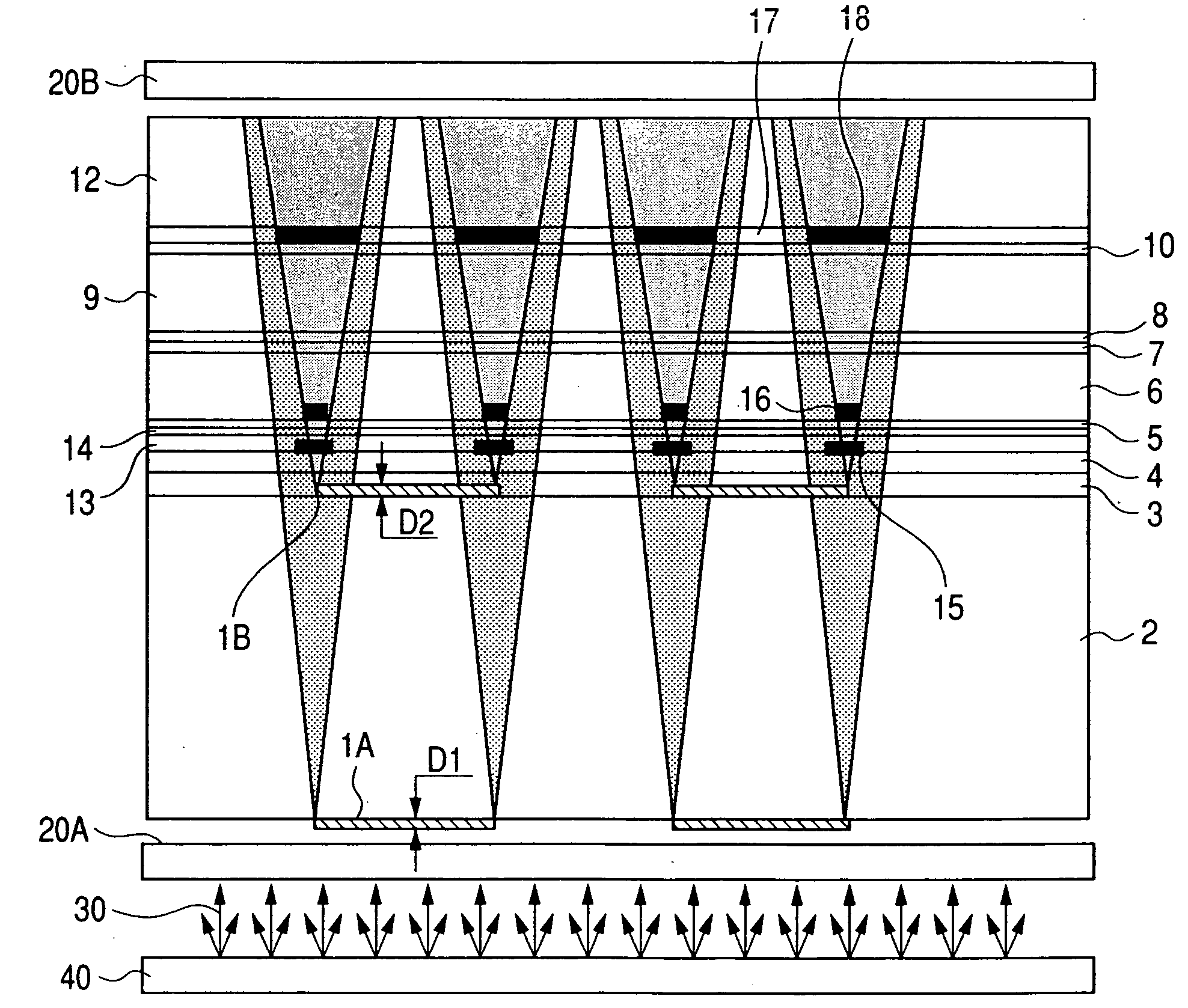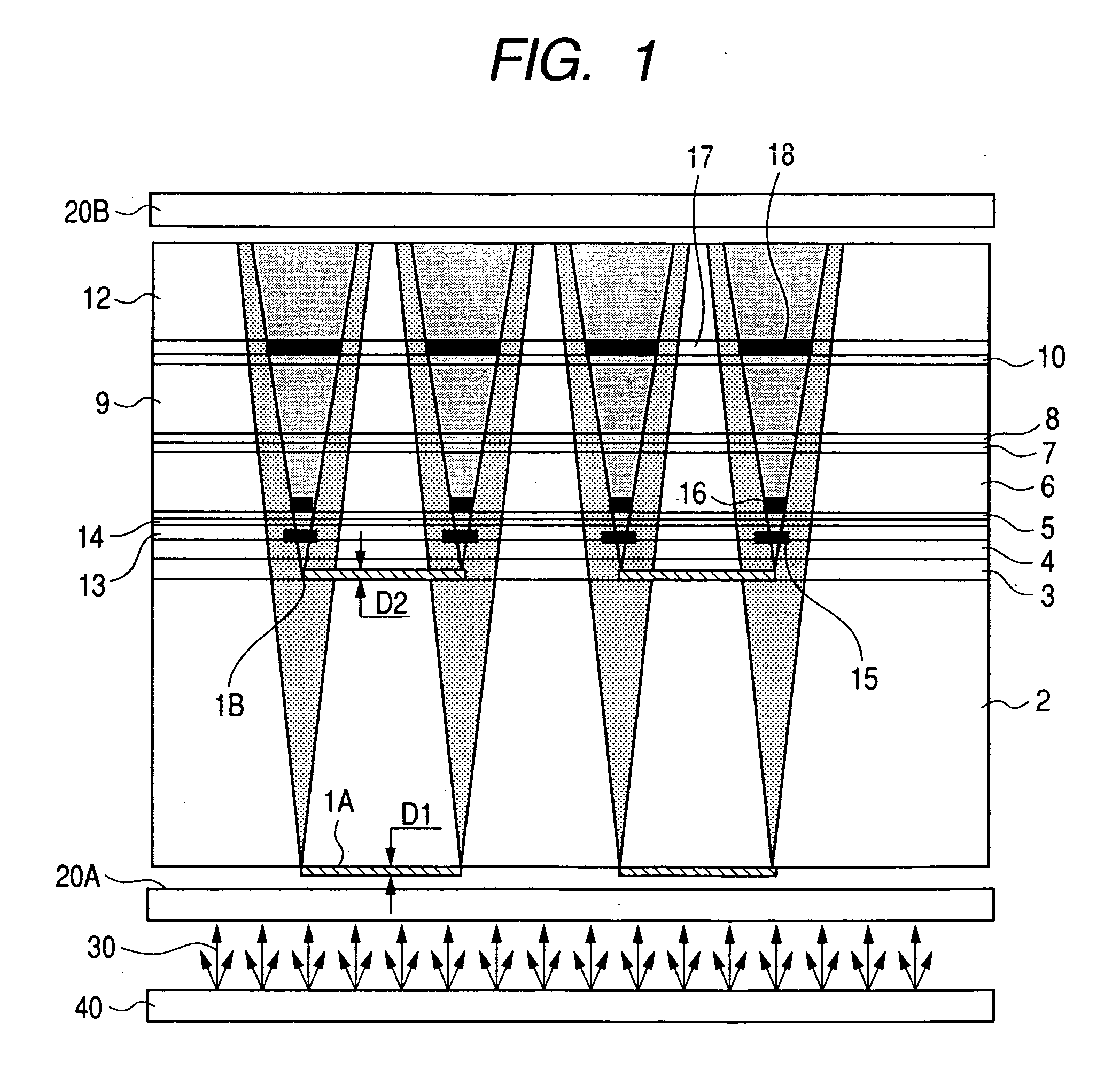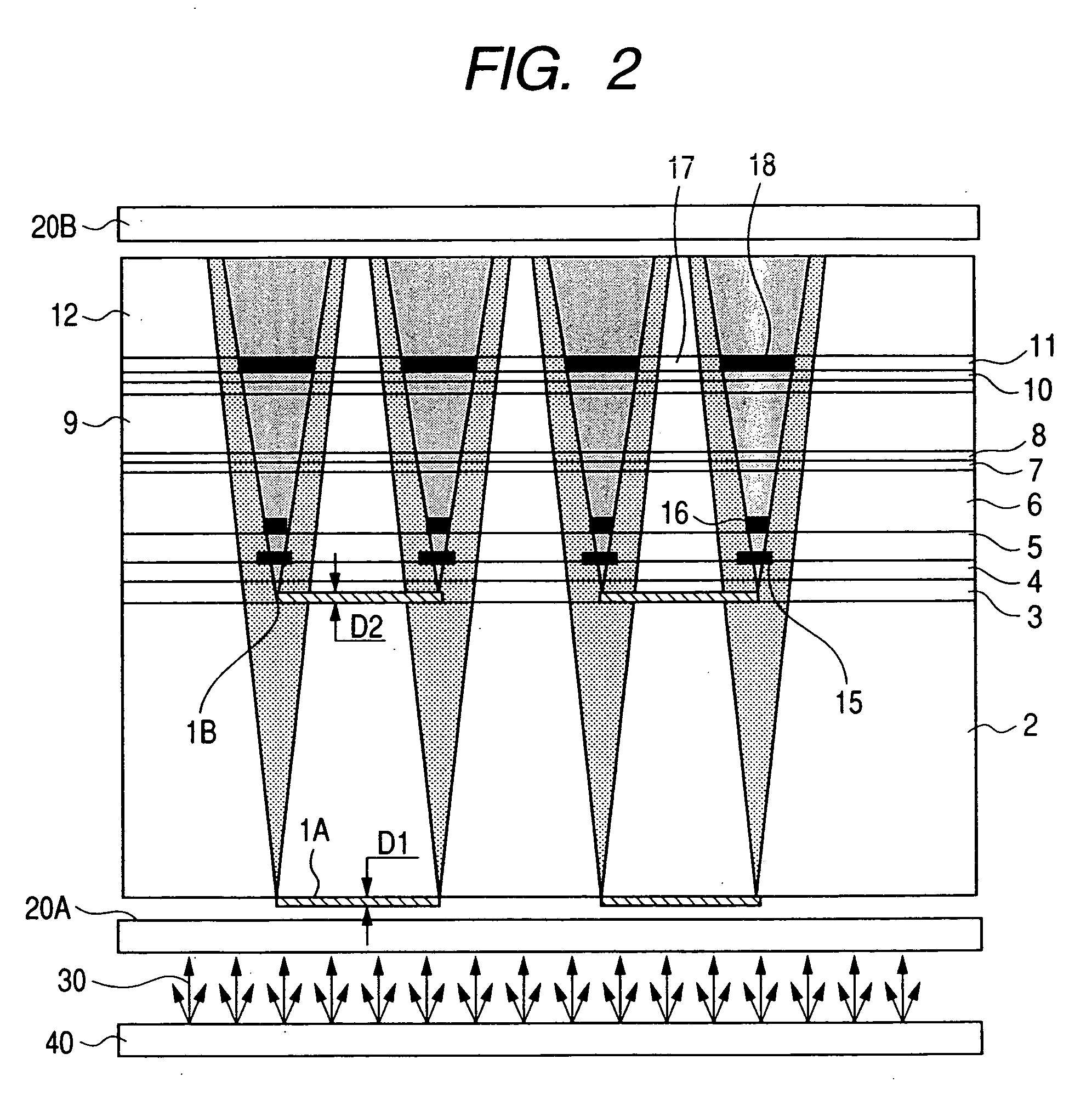Liquid crystal display apparatus
a liquid crystal display and control structure technology, applied in non-linear optics, instruments, optics, etc., can solve the problems of constant generation of light leakage current, difficulty in improving the transmittance of back light without reducing the use efficiency of back light sources,
- Summary
- Abstract
- Description
- Claims
- Application Information
AI Technical Summary
Benefits of technology
Problems solved by technology
Method used
Image
Examples
first embodiment
[0044]FIG. 1 is a schematic sectional view describing a first embodiment of a liquid crystal display apparatus according to the present invention. This liquid crystal display apparatus is a so-called IPS system (transverse electric field system). In this figure, an arrangement of wires, an electrode, a thin-film transistor, a pixel electrode, an opposite electrode, an insulating layer, and the like is shown in a conceptual diagram. Therefore, the arrangement and structure of these wires, electrode, thin-film transistor, pixel electrode, opposite electrode, insulating layer, and the like are different from actual structure. The same applies to the drawings in the following embodiments.
[0045]In FIG. 1, phase shift elements 1A are formed on the outer surface of a glass substrate 2 as a first transparent substrate, and phase shift elements 1B are formed on the inner surface thereof. The phase shift elements 1A and 1B are formed with presence and absence of a pattern array on the surface...
second embodiment
[0051]FIG. 2 is a schematic sectional view describing the second embodiment of the liquid crystal display apparatus according to the present invention. This liquid crystal display apparatus employs a so-called TN method (vertical electric field method). On the outer surface and inner surface of a glass substrate 2 as a first transparent substrate forming a thin-film transistor (TFT), phase shift elements 1A and 1B are formed. The phase shift element 1A on the outer surface is formed of an organic PAS film, with a refractive index of approximately 1.5. There is atmospheric air (with a refractive index of 1.0) between the phase shift elements 1A. A thickness D1 of this phase shift element 1A is set at 550 nm, a value obtained by substituting 550 nm for the center wavelength and 0.5 for Δn in D1Δn=center wavelength / 2.
[0052]On the other hand, the phase shift element 1B formed on the inner surface of the glass substrate 2 is an SiN layer (with a refractive index of approximately 2.0). As...
third embodiment
[0056]FIG. 3 is a sectional view describing the third embodiment of the liquid crystal display apparatus according to the present invention. The third embodiment is applied to a liquid crystal display panel of a semi-transmission liquid crystal display apparatus employing a TN method. In FIG. 3, for simplification, deflection plates 20A and 20B, and a back light system 40 are omitted from the illustration. In FIG. 3, this liquid crystal display is structured such that, in addition to illumination light from the back light system, external light Li entering from the color filter substrate 12 side passes through a color filter 17 and then through the layer of a liquid crystal 9, is reflected on a reflective plate 19, passes again through the layer of the liquid crystal 9 and then through the color filter 17, and exits to the outside as outgoing light Lo. In this case, the passage through the liquid crystal layer 9 twice requires that the thickness of the liquid crystal layer 9 at the ...
PUM
| Property | Measurement | Unit |
|---|---|---|
| wavelengths | aaaaa | aaaaa |
| wavelengths | aaaaa | aaaaa |
| width | aaaaa | aaaaa |
Abstract
Description
Claims
Application Information
 Login to View More
Login to View More - R&D
- Intellectual Property
- Life Sciences
- Materials
- Tech Scout
- Unparalleled Data Quality
- Higher Quality Content
- 60% Fewer Hallucinations
Browse by: Latest US Patents, China's latest patents, Technical Efficacy Thesaurus, Application Domain, Technology Topic, Popular Technical Reports.
© 2025 PatSnap. All rights reserved.Legal|Privacy policy|Modern Slavery Act Transparency Statement|Sitemap|About US| Contact US: help@patsnap.com



